Mind boggling connections have emerged in the course of evolution of species. Innumerable species have established a multi-faceted range of partnerships with each other. There are mutualistic (or symbiotic) partnerships, as well as parasitic and commensal (an organism benefitting from another organism without harming or benefitting the latter), in which the degree of dependence on each other varies. Some species are specialists and depend on a single species for survival, while some are generalists that work with multiple partners.
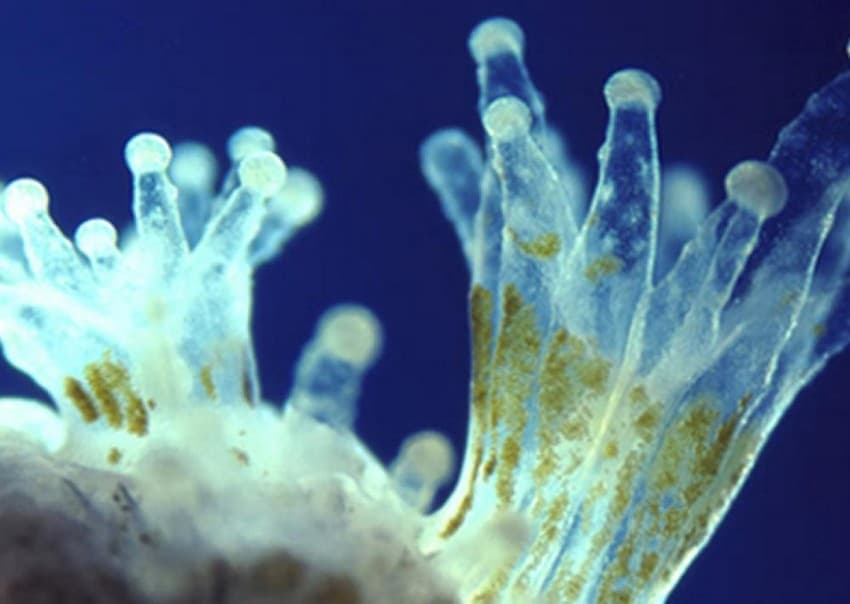
Seen here are coral polyps hosting brownish-green algae. These two organisms display a very specialised form of mutualism and depend on each other to survive. Credit: Smithsonian Ocean – Smithsonian Institution
For example, a plant species may rely on a single pollinator species or multiple pollinators to reproduce. Or, take the highly obligate mutualistic relationship between coral polyps and microscopic algae called zooaxanthellae. The photosynthesising algae provide the coral polyps with food and gain shelter and protection in return. One cannot survive without the other. So, what happens to the specialised mutualists when the only other host species on which they depend on for survival go extinct? Does their survival hang in the balance too? What kind of an evolutionary shift do we see in the surviving half of a highly specialised mutualistic assemblage?
Co-extinction is a real threat on the planet that is crumbling under various anthropogenic pressures such as habitat loss and biological invasion (invasive species are those that get newly introduced into an environment, either intentionally or accidentally, and end up colonising the place and causing severe harm to the native biodiversity and ecology). But, our understanding of the effects of species loss on inter-species relationships and interactions is rather poor. And though some studies suggest that “co-extinction may be the most common form of biodiversity loss,” very few co-extinction events have ever been recorded.
Let us look at some interesting examples below that tell us of highly specialised partnerships forged between different species which are threatened with extinction; how introduction of new species into an habitat challenged the tightly-knit symbiotic interactions between different species; while some other species that have displayed resilience and adaptability despite the loss of their mutualistic partners to human actions!
If the pig goes, the louse goes too?
While larger fauna grab headlines, lesser-known, lesser-appreciated creatures such as insects often disappear into oblivion. Take the case of the critically endangered species of insect, the pygmy hog-sucking louse (Haematopinus oliveri). Yes, lice! An extreme specialist, this blood-sucking ectoparasite is known to survive on only one host species – the pygmy hog, world’s smallest and rarest member of the pig family. The louse clings to the body hairs of the pygmy hog to feed on its blood. Its flat, leathery body can grow up to 3.5-3.8 mm. long.
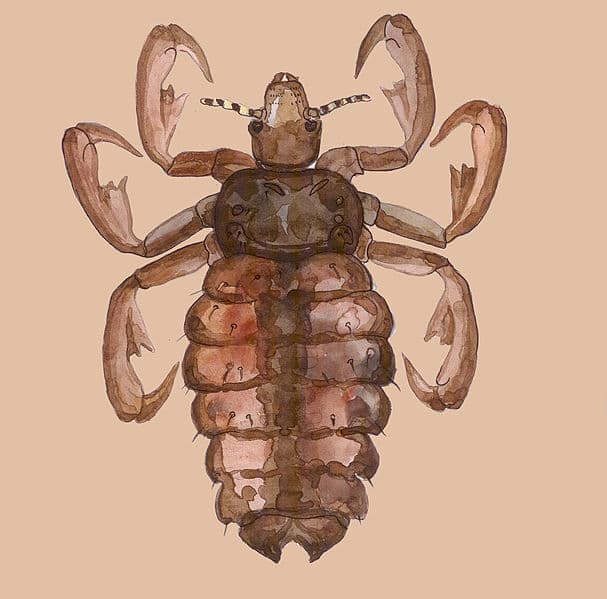
An artist’s illustration of Haematopinus oliveri, the pygmy hog-sucking louse. Credit – Zoological Survey of India/Public Domain
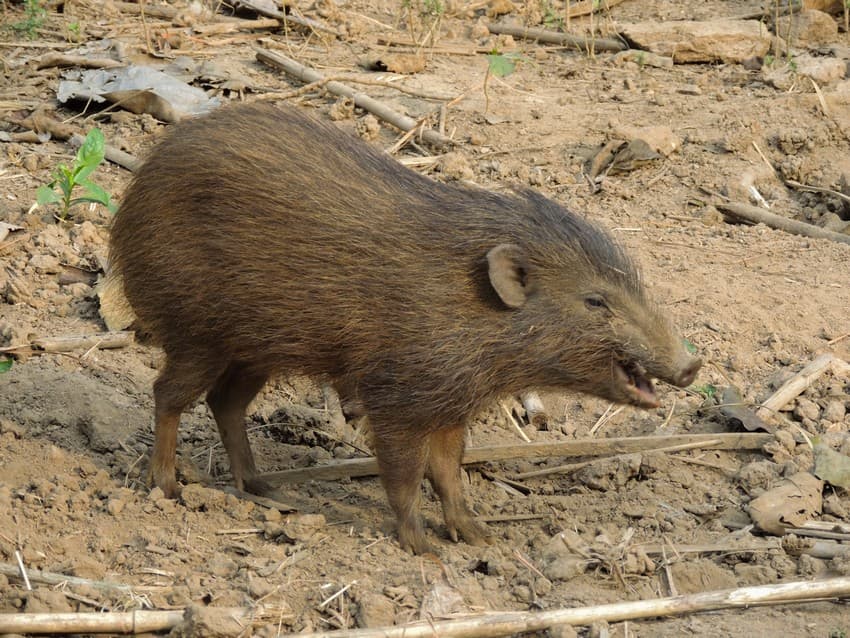
A pygmy hog in the Pygmy Hog Research and Breeding Centre in Guwahati, Assam . Credit – A. J. T. Johnsingh, WWF-India and NCF/Public Domain
However, the specific ecological niche the insect occupies comes with a big catch, and that is, if the host goes, the louse goes. Its host, the pygmy hog, happens to be a critically endangered species with less than 300 mature individuals surviving today. Once widespread across north India, Bhutan and Nepal, extreme habitat loss nearly wiped out the species, and the pygmy hog was once even believed to have become extinct, until its rediscovery in 1971. The incredible efforts of several wildlife researchers and conservationists have enabled a pygmy hog revival and with it, the pygmy hog-sucking louse revival!
Alien Ant Invasion is affecting plant insect pollinator mutualism in Hawaii!
Ants, it turns out, are among the most successful invaders, and non-native ant invasions are known to be extremely destructive, ecologically. One such ant species, native to South America, that has cultivated a notorious reputation for itself as a deadly invasive is the Argentine ant (Linepithema humile).
One of the better understood consequences of Argentine ant invasion is its negative impact on plant-insect pollinator interactions. Particularly in Hawaii ! Interestingly, Hawaii islands never harboured any native ant species. Today, all ~60 ant species found here have been introduced by humans including the Argentine ant. It was observed that the presence of this invasive ant species on various native flowering plants on the islands resulted in reduced visits from other native insects including native bees, honeybees and moths, thus, compromising the abundance and diversity of insect pollinators of these plants. The Argentine ants and other invasive ant species on the islands are also known to compete with endemic arthropods such as the Hawaiian yellow-faced bees for nectar and even raid their nests, causing decline in the bee populations. The invasive ant species are, thus, disrupting mutualistic plant-pollinator interactions and running interference in critical ecological functions such as pollination and seed dispersal.
Climate warming threatens an ancient Australian crayfish-flatworm partnership with co-extinction!
A unique and ancient symbiotic partnership that has stood the test of deep time, one that can be traced back to the reign of the dinosaurs some 100 million years ago, is now sadly, threatened with co-extinction by man-made global warming and habitat loss. In the freshwaters of eastern Australia, a type of flatworm called temnocephalan has adapted to a highly specialised way of living.
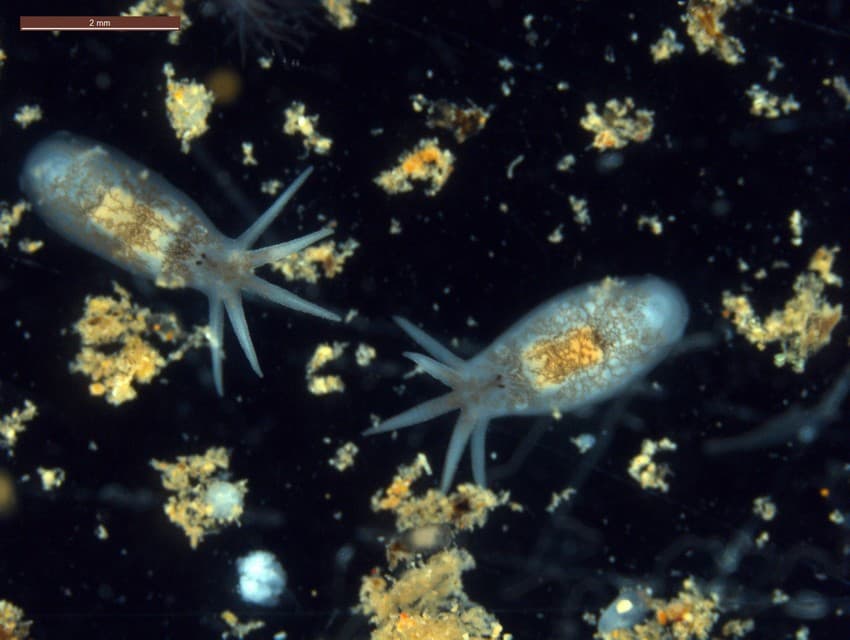
Temnocephalan flatworms (Temnosewellia sp.). Credit: Western Australian Museum
Only a few millimetres long, these temnocephalans, specifically of the genus Temnosewellia, live, feed and reproduce on the bodies of mountain spiny crayfish, and even inside the crayfish’s gill chambers, where they help by keeping parasites away. This flatworm specifically needs the body of a spiny crayfish as its host to survive. Molecular studies suggest that these tiny worms have been around on Earth for as long as the spiny crayfish have, and both have co-evolved since the Cretaceous period, leading up to this present form of obligate symbiotic relationship.
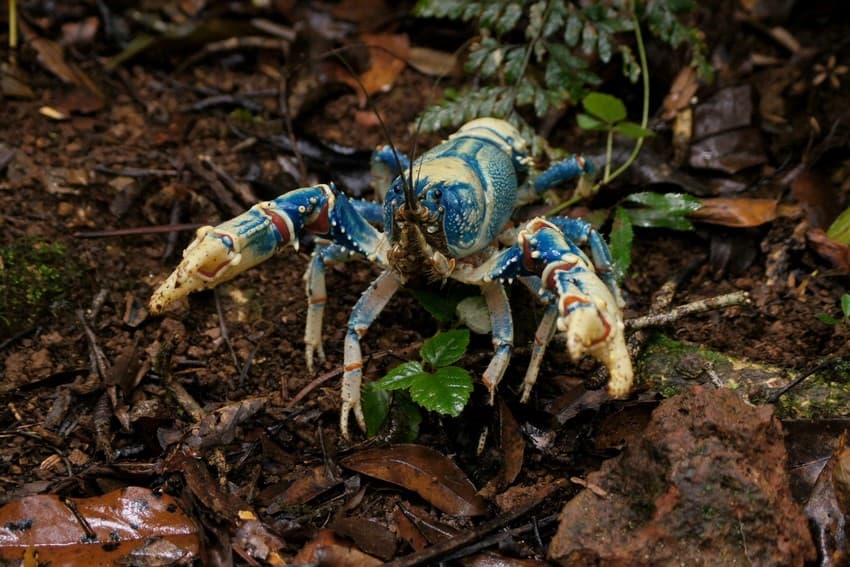
Temnocephalan flatworms( Temnosewellia sp.)(top) specifically survive by latching on to the bodies of the endangered Australian mountain spiny crayfish (above). Credit: Tatters/Public Domain
According to the International Union for the Conservation of Nature (IUCN), 75 percent of the mountain spiny crayfish are endangered or critically endangered. With the host species endangered, alarm bells are ringing for the Temnosewellia flatworms. The mountain spiny crayfish is a critical part of the eastern Australia’s freshwater ecology and plays an important role by recycling organic matter. With them gone, not only will the temnocephalans suffer, but so will the crayfish’s habitat.
Did the extinction of prehistoric megafauna leave many a plant species high and dry?
Even today, many fruit-bearing plant species have retained ancient features such as exceptionally large fruit-size, single and fewer, but enormous seeds, etc. that had evolved to enable seed dispersal by certain prehistoric megaherbivores which went extinct 10,000-15,000 years ago. Presumably, owing to overhunting by Homo sapiens. A good example is that of several plant species in Central America which once upon a time enlisted the services of large, elephant-like herbivores called Gompotheres who were wiped out nearly 10,000 years ago. But, interestingly, many of these plants have managed to survive and propagate without their ancient mega-sized seed dispersers. Their seed dispersal needs are largely being met by introduced livestock. But, the extinction of mega dispersers which brought the mutualism between fruiting trees and prehistoric megaherbivores to an end has resulted in plants adapting and compromising. The resulting shift in the mutualistic partnership has seen reduced seed dispersal distances, shrinking geographical ranges, reduced genetic variations, among others, in several plant species bearing megafaunal fruits.
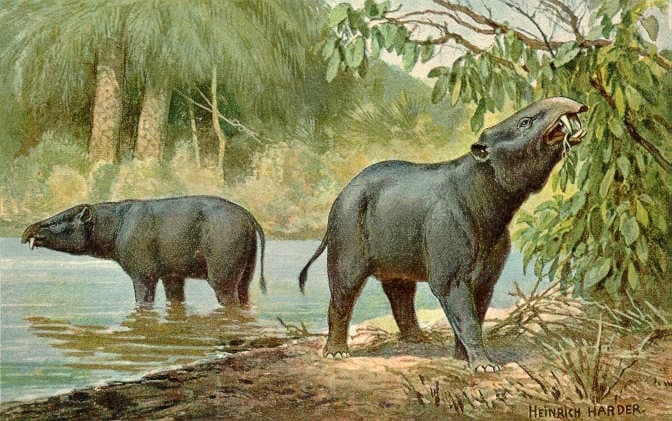
This illustration of the Moeritherium, an extinct species, was created by a German artist Heinrich Harder in 1919. Moeritheriums were among the early herbivorous ancestors of modern-day elephants. Credit: Public Domain
Large herbivores are intimately linked to a region’s vegetation. The handful of species of megaherbivores that still survive today is a miniscule representation of the vast diversity that existed on the planet up until 10,000-50,000 years ago. The megafaunal extinction reshaped terrestrial ecosystems which under their influence was very differently engineered. Today, 60 percent of all living large herbivores including elephants, giraffes, rhinoceroses, etc., face extinction. Perhaps, decline in their populations may have already triggered a wave of shift in large herbivore-plant interactions. We just don’t know the true scale of it yet.
——————————————————————————————————————————————————————
About the author: Purva Variyar is a conservationist, science communicator and conservation writer. She works with the Wildlife Conservation Trust and has previously worked with Sanctuary Nature Foundation and The Gerry Martin Project.
Disclaimer: The author is associated with Wildlife Conservation Trust. The views and opinions expressed in the article are her own and do not necessarily reflect the views and opinions of Wildlife Conservation Trust.
——————————————————————————————————————————————————————
Your donations support our on-ground operations, helping us meet our conservation goals.
——————————————————————————————————————————————————————
Related Links
- Weird Connections
- Weird Connections – Part II
- Quadripartite Association
- Extinction – The Mainstay of Life on Earth
- Manipulative Frankensteins

